Restoration of the Norman Cloister
/W. A. Forsythe reports on the restoration of the Norman Cloister in advance of its opening as the Cloister Garth gardens in the 1930s, the first project sponsored by the Friends. Featured in The Friends of Rochester Cathedral Annual Report for 1939.
Many of the works outlined in the last report concerning the restoration of the Norman Cloister have been carried out.
The extensive clearance of the old domestic buildings cannot but impress every one with the results. The gain to the open character of the enlarged space after the removal of the Prebendal House has more than justified the anticipations of those who foresaw and promoted this great change.

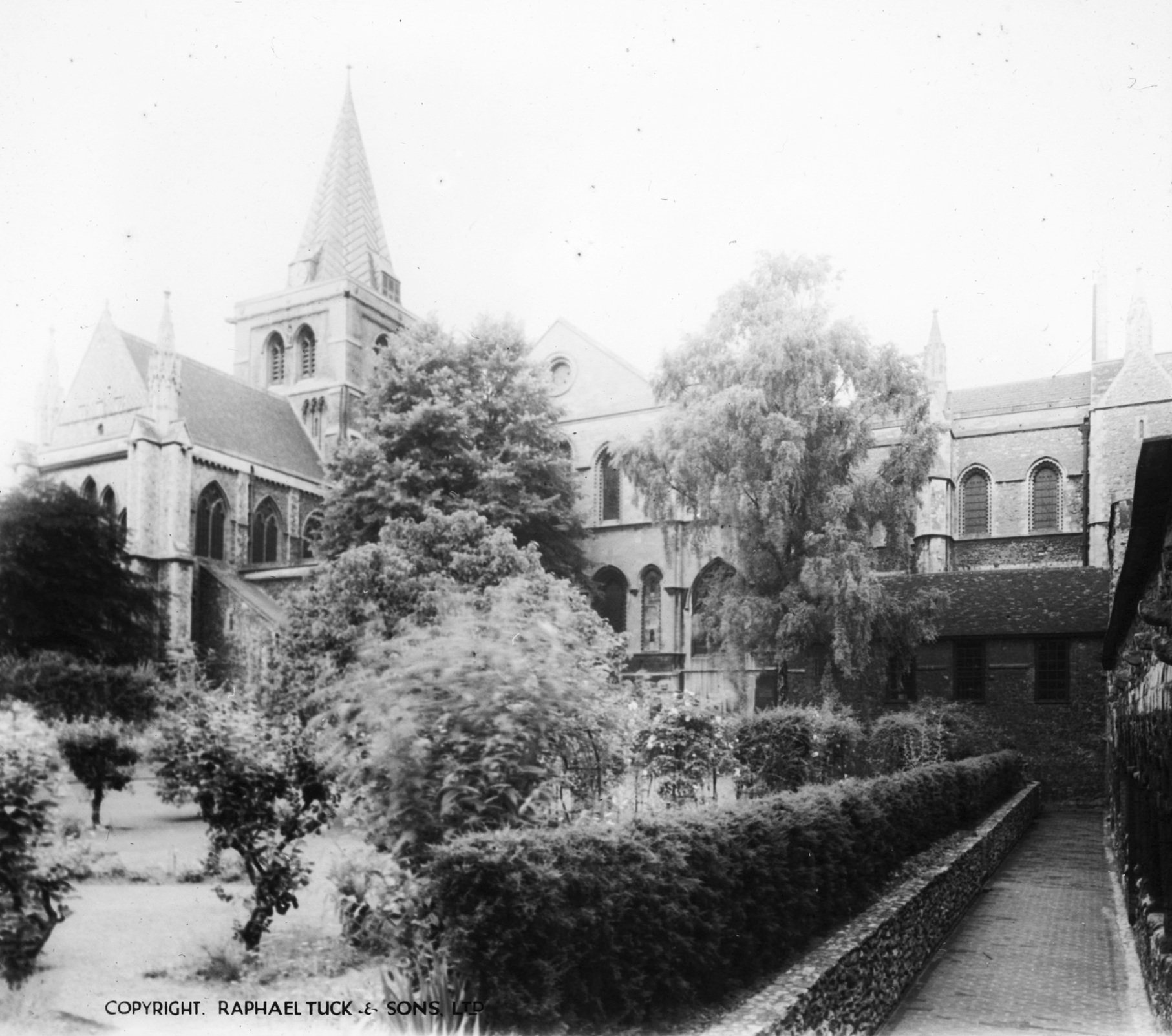

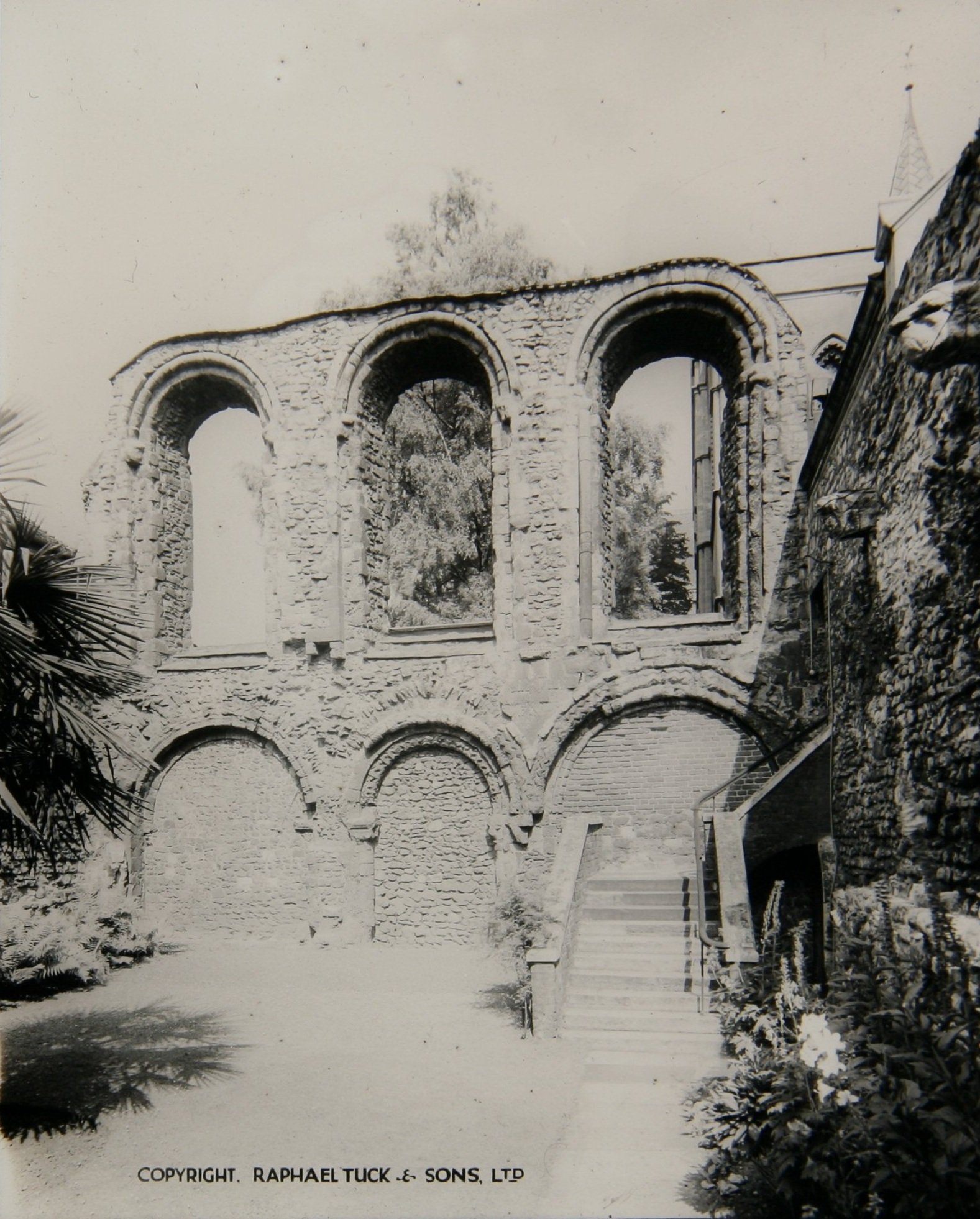
Photographs of the Cathedral cloisters before the restoration. Rochester Cathedral Chapter Library, lantern slides collection.
The form of the completed Cloister is now revealed. It is an important reinstatement in English Ecclesiastical remains because the Cloisters of Rochester are unique in that they lie to the south of the Choir, instead of, as is usually the case, to the south of the Nave.
It is interesting again to refer to the valuable report made by the late Sir W. St. John Hope which then indicated the position of the west Cloister walls very much as they have been uncovered.
Several interesting features are now disclosed which it was not possible for that report to indicate. Foremost of these is the discovery of four groups of triple stone shafts in the south-west angle of the Cloisters, all of the earlier Norman period of the Monastery. Several springing stones indicate that the space was vaulted and formed part of the Undercroft of the Cellarer's Lodging. The middle shaft of each group, with its capital and base, is set anglewise in order to support the diagonal rib of the Vault. This differs from the Undercroft of the Dormitory, which appears to have had a timber ceiling instead of a stone vault.
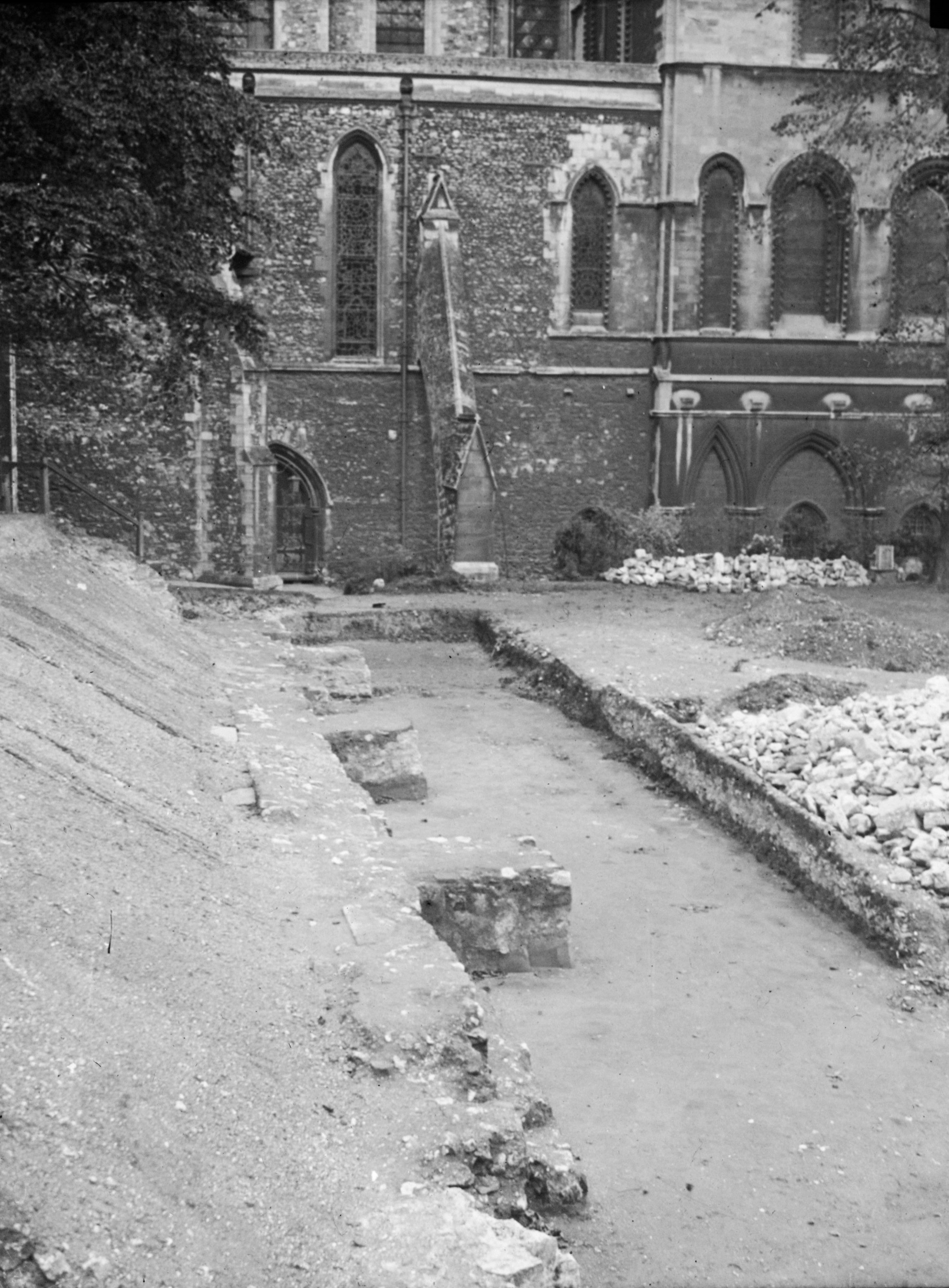
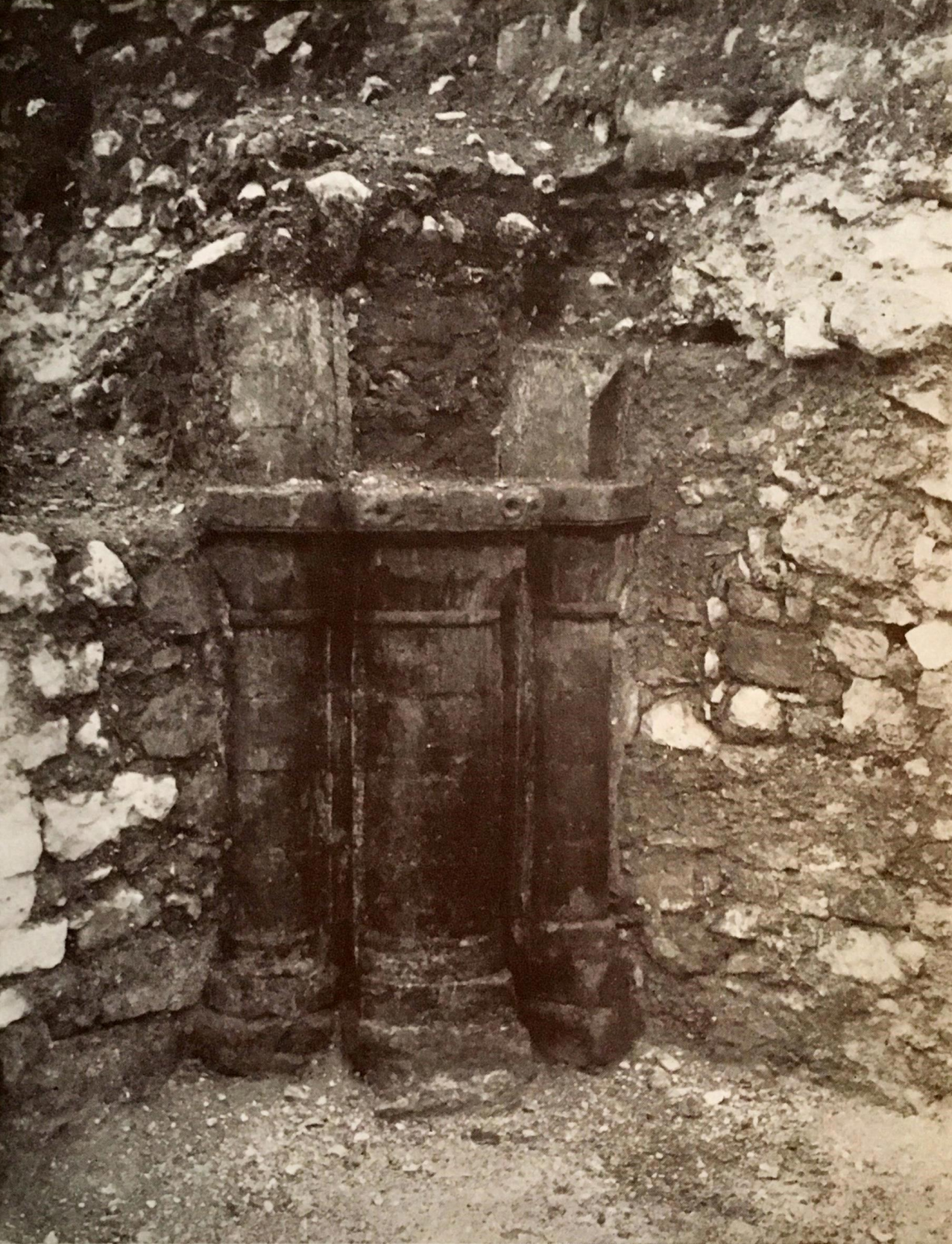
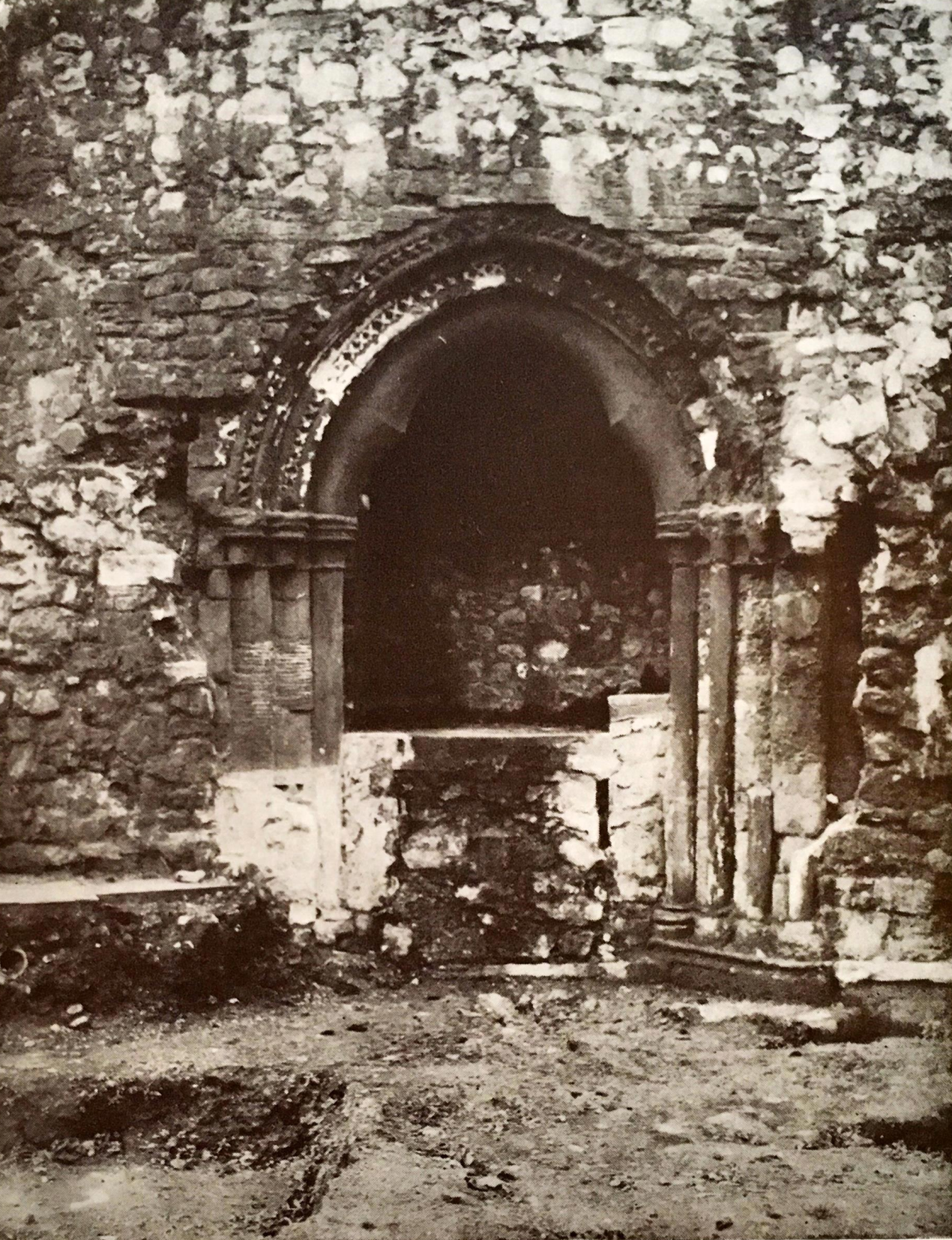
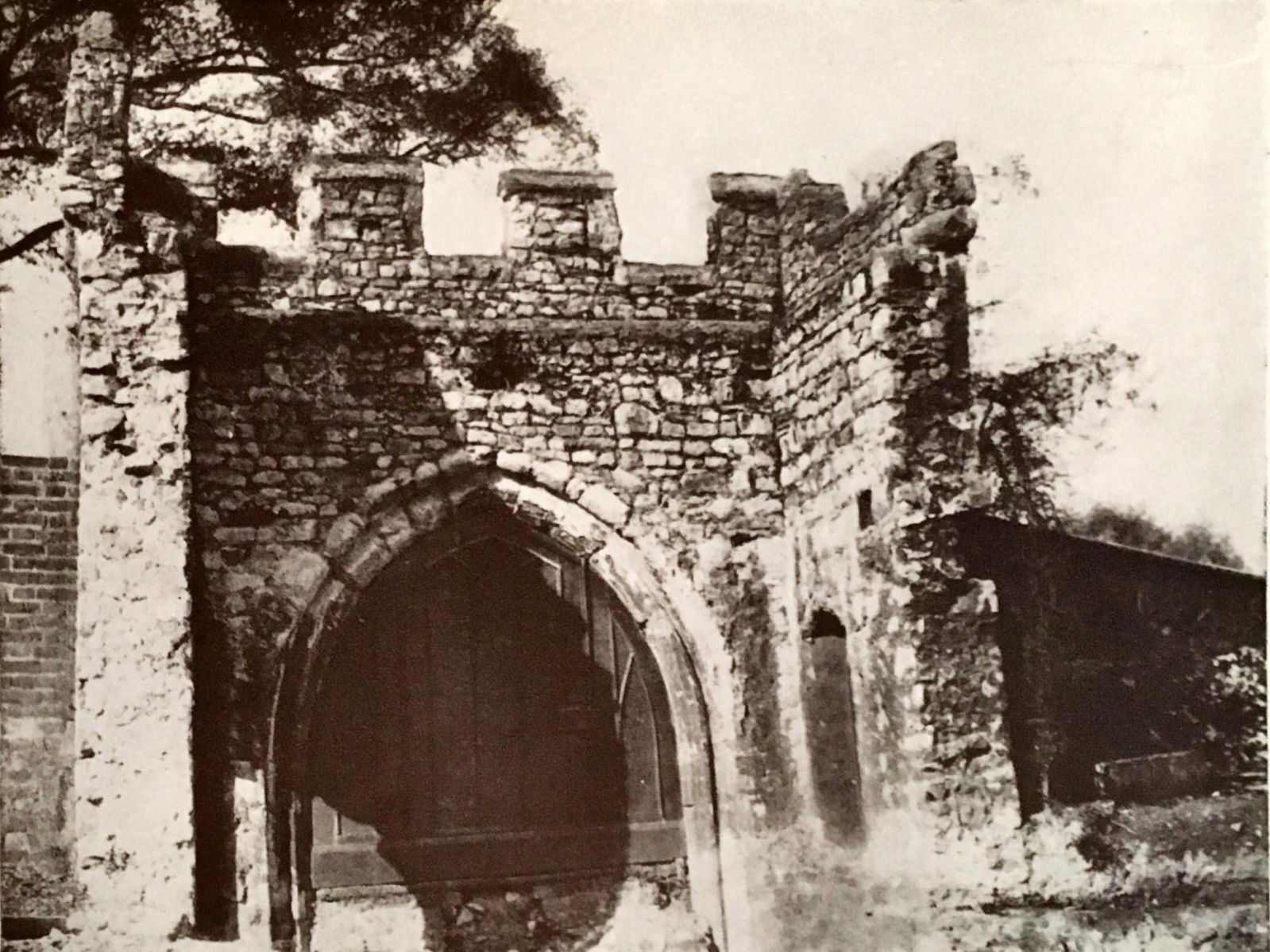
Photographs of the restoration project in progress. Rochester Cathedral Chapter Library, lantern slides collection and The Friends of Rochester Cathedral Annual Report for 1939.
The west walk of the Cloisters is now clearly defined. The inner, or east, wall has been disclosed, consisting of a rough rubble base standing barely two feet high. The west, or outer, wall of considerable substance, has also been uncovered. Owing to the later insertion of some heavy brick piers or bases, a considerable structural change appears to have ben effected in later - probably Tudor-times. There is at the moment little to indicate the purpose of these projecting foundations. Information may be forthcoming when the large bank has been further explored.
At the south end of this west walk and adjacent to the Cellarer's Undercroft further insertions were made, but they appear to have had no definite connection with the layout of the Cloisters. The walls in question are not in line with the remains of the Cloister inner wall.
A large area of tile paving was uncovered. It consists of nine-inch red tiles laid to conform with the lines of the later Tudor walls, that is to say, not square to or parallel with the Cloister lines. This paving thus bears no relationship to the original work of the Cloisters; for purposes of protection it has been covered up. It is hoped that the lowering of the south Cloister walk will be undertaken in due course.
Much fint and stonework of the early period has been found; it is mainly composed of fallen or disturbed masonry. There is, however, an interesting collection of Norman carved stones of a delicate nature, obviously of a later period and by the same hands as the fine work of the Chapter House entrance. Amongst them are some shafts enriched by spiral ornament pertaining to the detached shafts of a Nor-man doorway. These have been, for the time being, placed in the wall recesses of the East Cloister.
At the south-west corner some further removal of earth, etc., has uncovered the bases of the triple shafted jambs of the thirteenth-century entrance to the Monks' Lavatory. The fourteenth-century entrance to the Cloisters, known as the Bishop's Gateway, has been cleared of much encumbering soil and walling so that it now stands clear in its ruined and detached position. Steps leading down inside the gateway have been uncovered. The rubble filling at the top of the steps indicates that the roadway off which the gate opens has risen considerably during the long period of its use and remaking. Much repair is required to this stonework and, indeed, some structural support to the walls, not only for the Gate itself but of the public road.
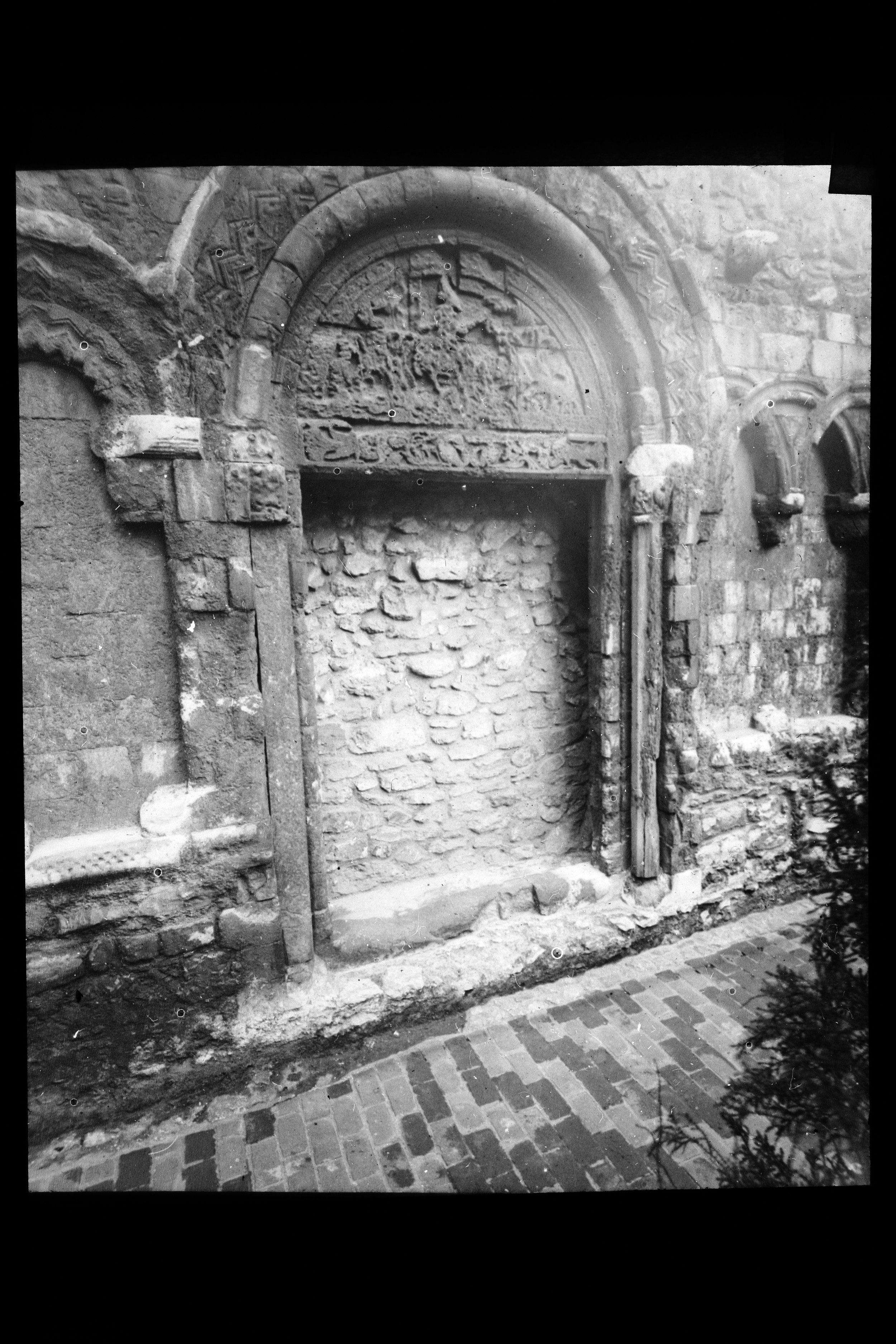
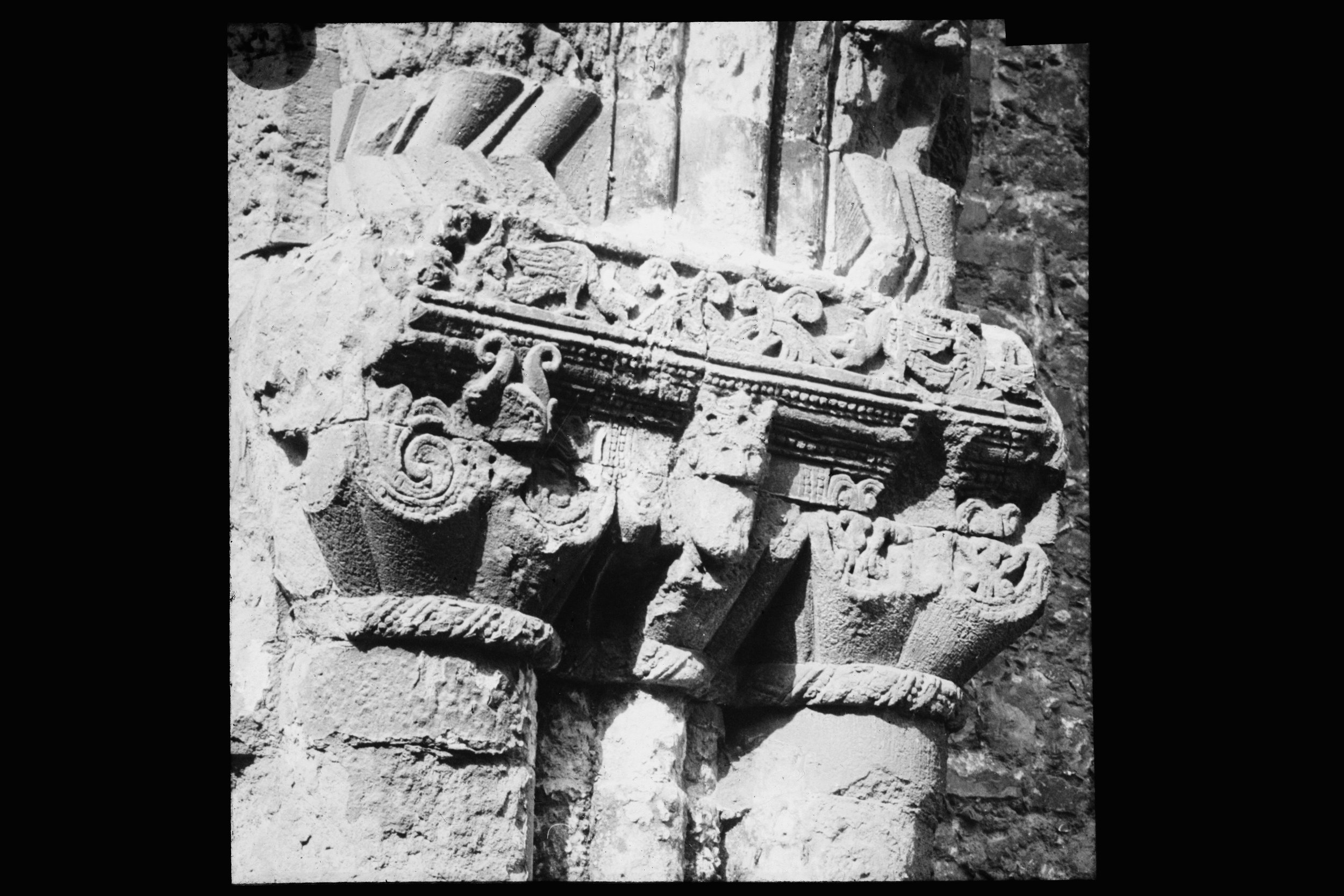
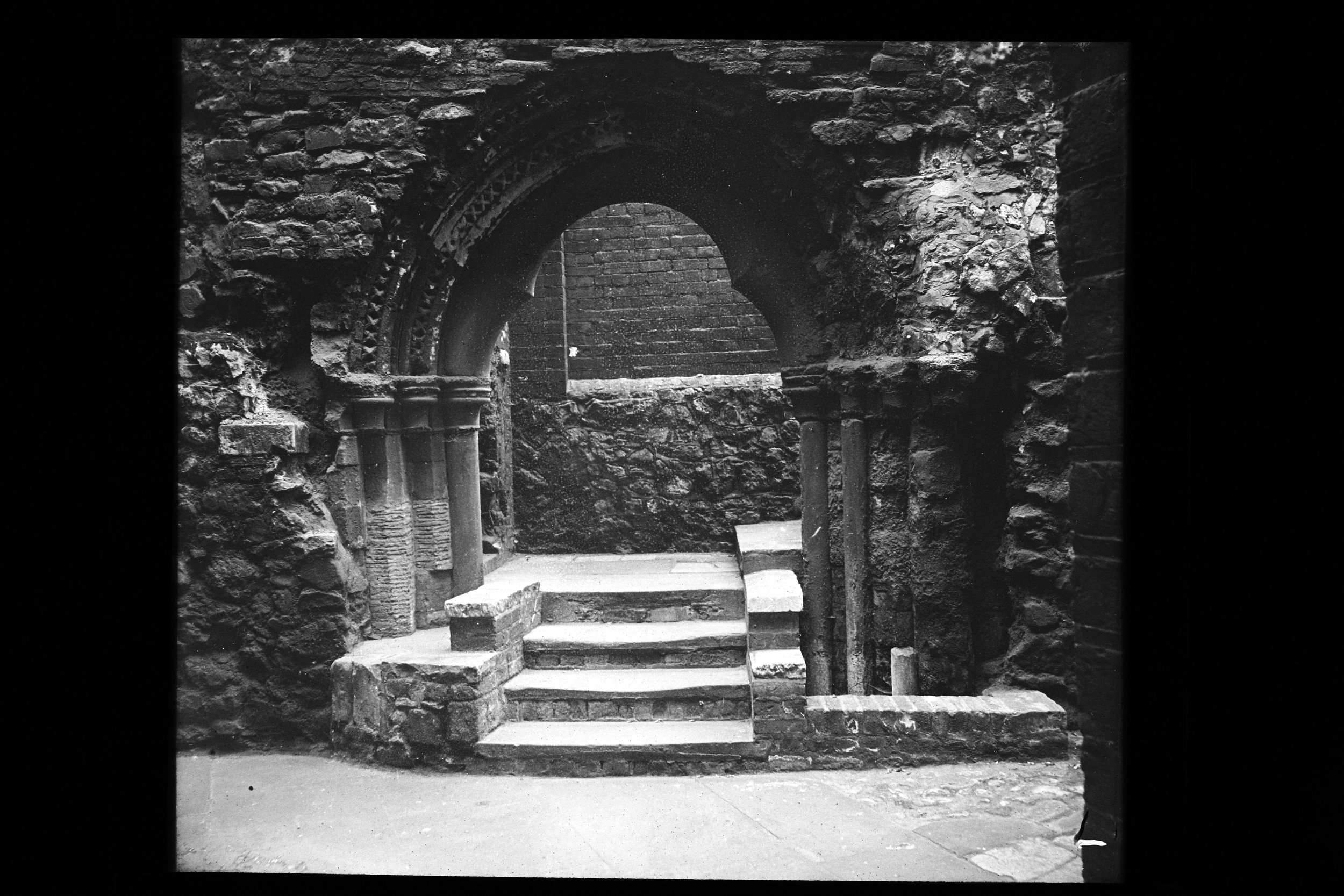
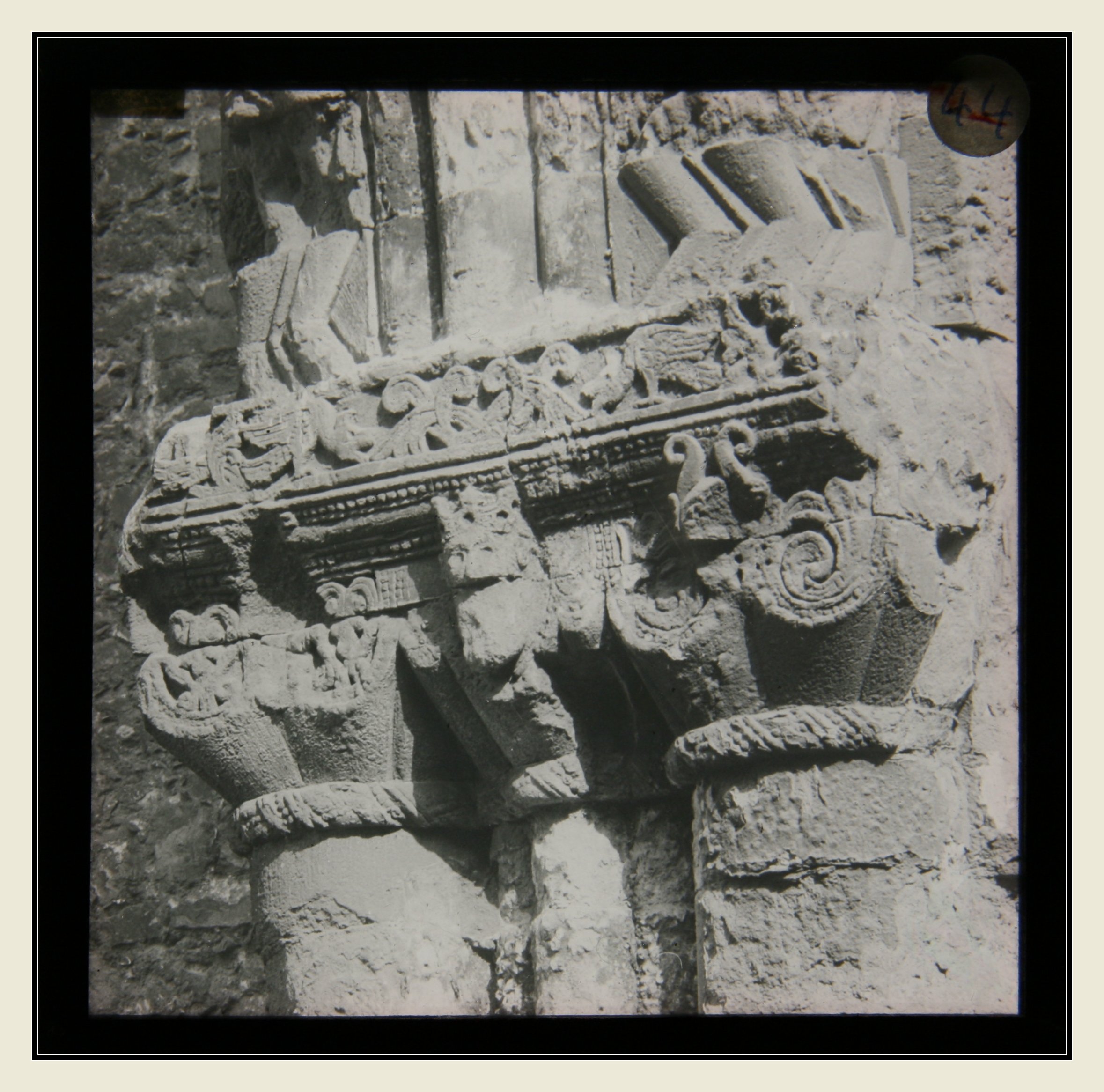
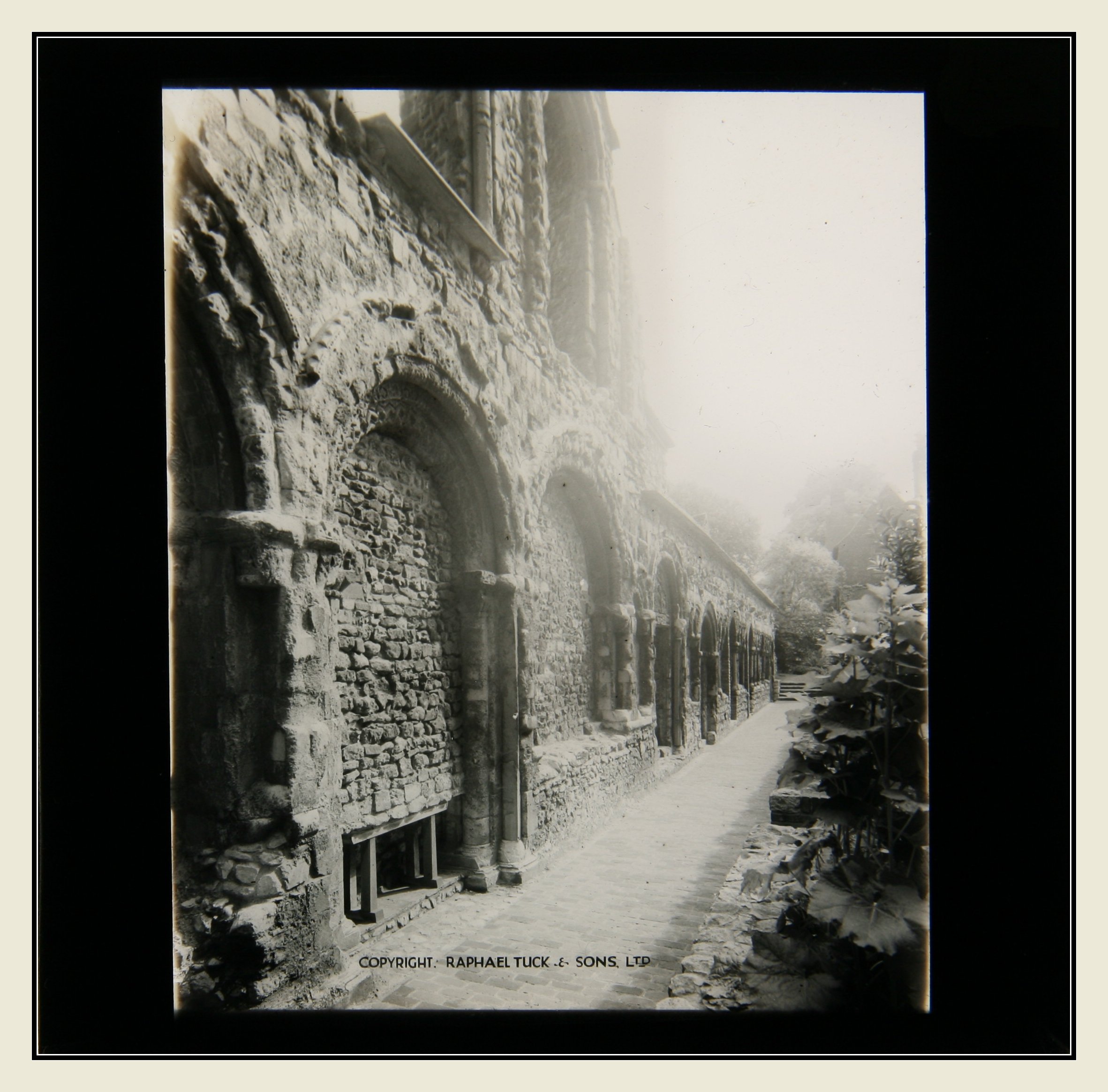
Photographs of the Cloister Garth shortly after the completion of the works.
It is proposed to remove the high brick wall which formerly enclosed the backyard of the demolished house and replace it by an open railing upon a low wall. This in effect, but not in detail, will continue the existing railing now enclosing the south boundary of the Cathedral. It will further enable the enlarged Cloisters to be viewed from the road. Similarly, it will open out the full extent of the reclaimed space when viewed from the eastern side of the Cloisters. Again, when the Bishop's Gate is repaired the solid painted door may be filled with an iron grille.
Much further research is necessary; the most important stage has, however, been completed. Many structural works are required for the maintenance of the walls and other features recently uncovered. Much of this would have been already undertaken but for the heavy winter weather which has faced Mr. Farley Cobb in the excellent services he has rendered to the operations.
When the work is resumed, the reinstatement of the grass, the planting of the large west bank of the Cloisters and a general tidying up will complete one of the most interesting developments in the precincts of our English Cathedrals.
W. A. Forsythe
The Friends of Rochester Cathedral were founded to help finance the maintenance of the fabric and grounds. The Friends’ annual reports have become a trove of articles on the fabric and history of the cathedral.
Explore the history and archaeology of the Priory of Saint Andrew and find out more about green heritage at the Cathedral.
Keeping the Cathedral standing, warm, lit, beautiful and ready to receive worshippers and visitors is a never-ending task.







